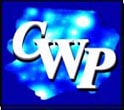Some Important Contributions
From the obituary by James Chadwick in Nature, 177, 964 (1956):
"Irène Joliot-Curie ... was born in the stirring days of radioactivity when
her parents [Marie and Pierre Curie] were making great discoveries, she grew up with radioactivity,
and all her life was devoted to its study.
"In 1926 she married Frédéric Joliot ... and there began a collaboration of
husband and wife in scientific work rivalling in productive genius even that
of her parents. The most outstanding of their joint papers were published in
the years 1932-1934. In the first of these, on the radiation excited in
beryllium by alpha-particles, they reported a very strange effect which
provided the clue to the discovery of the neutron. Then, after studying the
conditions of excitation of neutrons by the impact of alpha-particles on
various elements, they turned for a time to the 'materialization' of
positive electrons through the action of gamma-rays of high energy. This wa
followed by a systematic study of the radiations emitted from the lighter
chemical elements under the impact of alpha-particles, which through the
light of intuition -- and good technique -- led them, in early 1934, to
their beautiful discovery of artificial radioactivity. An interesting
feature of this discovery is that it was so long in coming; for the
phenomenon of artificial activity had been expected, and sought for, since
the earliest days of radioactivity. For this discovery the Joliot-Curie
were awarded the Nobel Prize for Chemistry in 1935.
"About two years later ... with P. Savic, she examined in detail the
artificial radioelements produced by the irradiation of uranium by slow
neutrons, analysing the products and identifying them chemically, and she
came within a hair's-breadth of recognizing that the phenomenon involved in
the production of these elements was that of fission."
Discovered , but did not fully identify, the radioactive
isotope of lanthanum with half-life of 3.5 hours which is a
fission product of neutron bombardment of uranium (with
P. Savitch).
Made one of the first determinations of the neutron mas
(with F. Joliot-Curie) and concluded this particle would
be unstable and decay to proton and electron.
Some Important Publications
"The Emission of High energy Photons from Hydrogenous Substances Irradiated with
Very Penetrating Alpha Rays," Comptes Rendus 194: 273 (1932) with F.
Joliot.
"Effect of Absorption of Gamma Rays of Very High Frequency by Projection of Light Nuclei," Comptes Rendus 194: 708 (1932) with F. Joliot.
"Mass of the neutron," Comptes Rendus
197: 237 (1933) and Nature 133: 721 (1934) with F. Joliot-Curie.
"Artifical production of a new kind of radio-element,"
Nature 133: 201 (1934)
with F. Joliot-Curie; see also Comptes Rendus 198: 254 and 559 (1934).
"Radioelement of period 3.5 hours formed from uranium
bombarded by neutrons," Comptes Rendus
206: 906 and 1643 (1938) with P. Savitch.
Honors
Awarded Nobel Prize in Chemistry in 1935
for the discovery of artificial radioactivity with F. Joliot-Curie.
Barnard College Gold
Medal for Meritorious Service to Science
1940 with Frederic Joliot-Curie. [39A CBY]
Officer of the
Legion of Honor.
Jobs/Positions
1918-?? Assistant to Marie Curie, Radium Institute
1936 Undersecretary of State for Scientific Research,
Léon Blum's Popular Front Government (4 months)
1946-56 Director, Radium Institute
1946-50 Director, French Atomic Energy Commission
1937-56(?) Professor, Sorbonne
Education
Baccalauréat Collège Sévigné 1914
Ph.D. Sorbonne 1925
[1 CLH], [1X N20], [5A3 DSB], [12A GKS], [15D PGA], [26 SBM], [39A CBY]
 Additional Information/Comments Additional Information/Comments
During WWI, with her mother, Marie Curie, ran
mobile X-ray machines which traveled from camp to camp
diagnosing soldiers' wounds.
"Her parents were both persons of strong and independent mind, and Mme.
Joliot-Curie inherited much of their character as well as their scientific
genius. She had a powerful personality, simple, direct and self-reliant. She
knew her mind and spoke it, sometimes perhaps with devastating frankness;
but her remarks were informed with such regard for scientific truth and with
such conspicuous sincerity that they commanded the greatest respect in all
circumstances. In all her work, whether in the laboratory, in discussion, or
in committee, she set herself the highest standards and she was most
conscientious in the fulfillment of any duties she undertook."
From the obituary by James Chadwick in Nature, 177, 964 (1956)
Irène and Frédéric signed all their papers jointly, even after
she became Director of the Radium Institute.
Worked for women's suffrage. [1X N20]
Both Irène and Frédéric were part of the French Resistance during
WWII. [26 SBM]
The Nazis requisitioned her equipment after the fall of
France, but it was all placed at her disposal in November
1940. [39A CBY]
Member of the World Peace Council. [1X N20]
Field Editors: Byers/Moszkowski
<stevemos@ucla.edu>
Edited by:
byers
<byers@physics.ucla.edu>
|  Welcome
to CWP at UCLA
Welcome
to CWP at UCLA  Welcome
to CWP at UCLA
Welcome
to CWP at UCLA